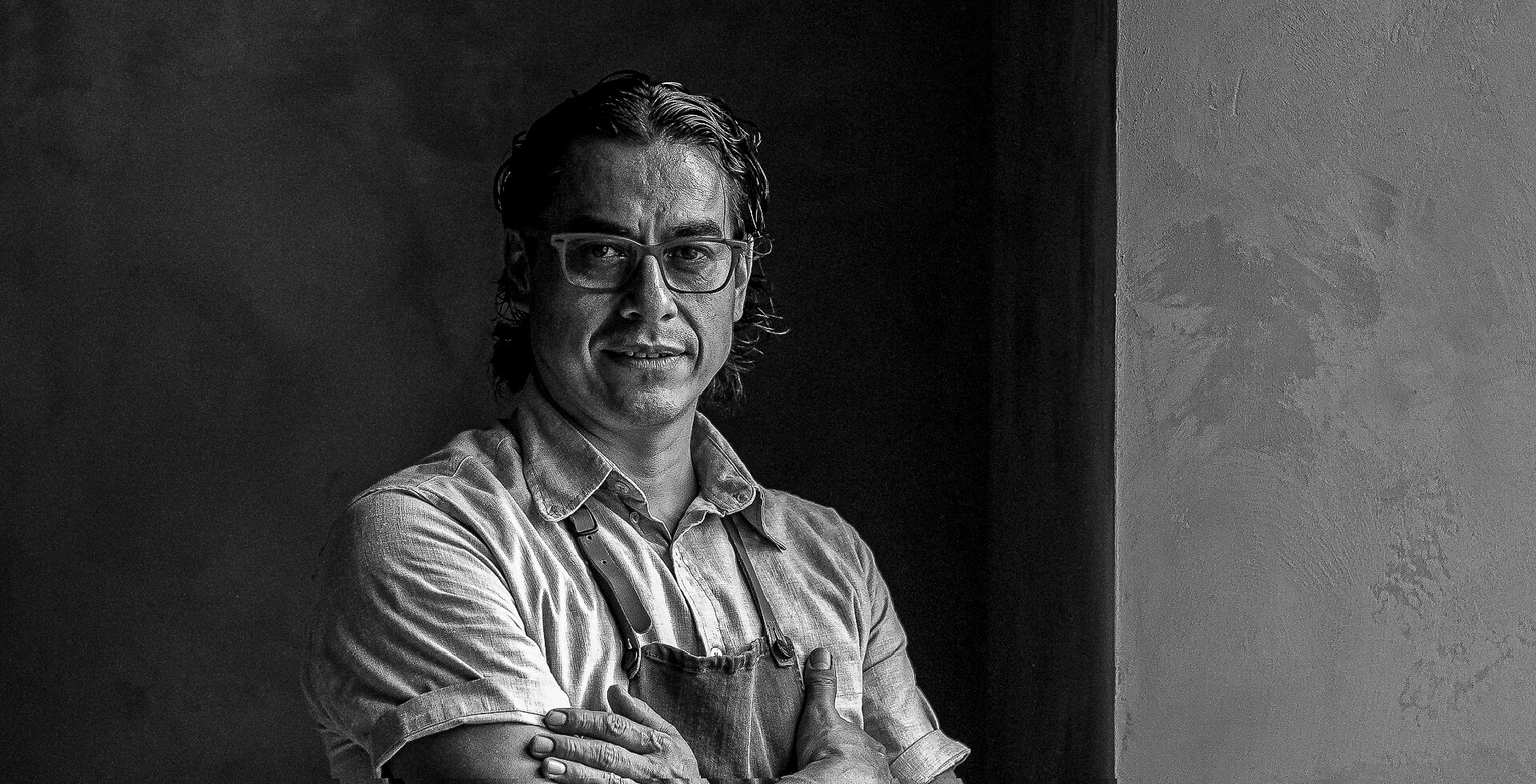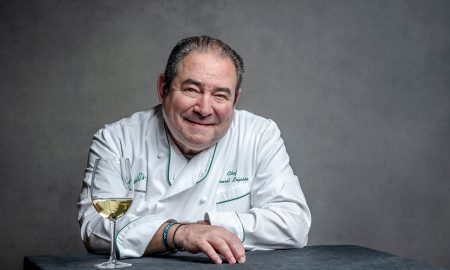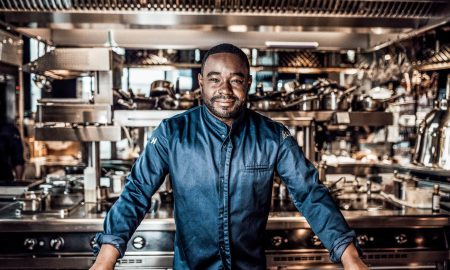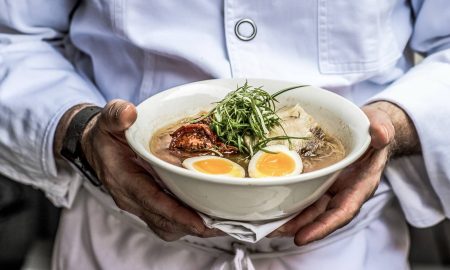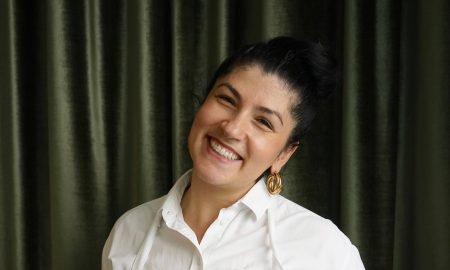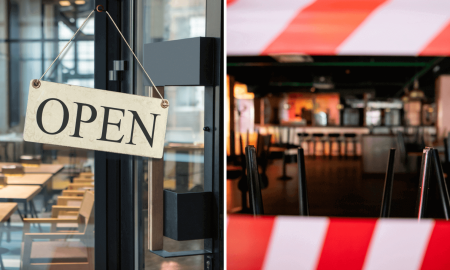This is truly a story of the American dream, but with a twist. First, this story doesn’t actually start in America. Second, its main character had to leave America at a critical moment for his dream to come true. Why? “This takes a while to answer,” says Carlos Gaytán.
In the USA, the native Mexican is a star. He’s a regular on TV cooking shows that draw millions of viewers, and he operates an uber-hyped restaurant in Chicago. In 2013, he was the first Mexican ever to be awarded a Michelin star, therefore making international gastronomy history – something he continues to do in his restaurant Tzuco. That’s where he strips Mexican cuisine of all its clichés. With its four different climate zones and just as many time zones, he proves his homeland has a lot more to offer than just tacos and tortillas. This has been such a success in the USA that he will soon be on everyone’s lips at Disneyland in California. But we’re getting ahead of ourselves.
Sieh dir diesen Beitrag auf Instagram an
A visit to kick-start his career
Carlos Gaytán’s story begins in a small Mexican town called Huitzuco. Born there in 1970, food played a decisive role in family life from an early age. “I used to help my grandfather work the fields after school. Grains, peanuts, watermelons, beans – he planted everything that would flourish there,” Gaytán recalls. He often went hunting with his father. “He didn’t just show me how to shoot game, but also how to gut it out in the wilderness, cut it to size, and prepare the individual cuts over an open fire.”
To date, Gaytán says, many people outside Mexico do not know the country has a significant wildlife population. “Many people are also amazed when I tell them about the many fungus species that are native to Mexico,” he says. His mother also shaped his culinary instincts. “We didn’t have much money,” he says, “so she couldn’t buy groceries at the market very often. Instead, she picked everything from forests and meadows and let her creativity run wild at home. She’s still an authority for me when it comes to taste.”
As much as the idyllic town with its mountains, fields and forests had to offer, it soon became too small for the young Carlos. Much too small. What was he supposed to do in this snug nest? Forever give a helping hand to his parents and grandparents? “I wanted to get away from there,” says Carlos Gaytán. But he didn’t know exactly where he was headed – that is, until one of his cousins came to visit from Chicago.
Sieh dir diesen Beitrag auf Instagram an
Deceptive highlight
“He said I could come with him, so I packed my backpack and went to Chicago with him without a penny in my pocket.” But he was not only short of money, he was also short a visa. The young Carlos quickly discovered in the land of endless opportunities that the opportunities to earn money were very limited. “I was effectively here illegally and had to be careful not to get caught.” He started working as a dishwasher. He met other Mexicans at the Sheraton North Shore Hotel not far from downtown Chicago. “Even those who have been working as a dishwasher for 20 years. I swore to myself: That won’t happen to me.”
Therefore, he started working as a dishwasher in a wide variety of restaurants after work. “These were unpaid internships, but I was interested in learning something. I wanted to cook and be paid for it at some point.” This was when Gaytán was introduced to classic French cuisine. As an unpaid intern in a handful of restaurants, he taught himself how to prepare a stock, what Beurre Blanc is and why white truffles are eaten raw and black truffles are not.
Carlos Gaytán gives Mexico its first star
His ambition soon paid off: He became a Gardemanger at the Union League Club of Chicago, an elite private club of the kind that still exists in many places in the United States. Just a short while later, he took over as Chef de Cuisine at Bistro Margot, Chicago’s hotspot for traditional French cuisine.
Sieh dir diesen Beitrag auf Instagram an
Those were years of boundless ascent. That’s how the former dishwasher became increasingly self-confident – so much so that one day he decided to venture out on his own. Carlos Gaytán opened his first restaurant in May 2008. At Mexique – the name said it all – he gave culinary expression to his Mexican roots, interpreting them fully à la française. Five years later, the Michelin Guide gave him his first star. This made Carlos Gaytán the first Mexican to receive the prestigious award.
That is exactly where the story of Gaytán’s American dream may have come to an end. He had achieved more than he had ever dreamed of. The poor farm boy from Huitzuco had become a successful star restaurateur in downtown Chicago, where foodies flocked from all over the world. Everything was perfect. Wasn’t it? “No, it definitely wasn’t,” Gaytán says today. He plunged into a deep crisis, and closed his restaurant from one day to the next.
Gaytán’s way out of this crisis of meaning
What happened? “It didn’t feel right anymore – in so many ways,” Gaytán explains. The classic fine-dine line suddenly felt restrictive to him. Was all this really still him? Did he cook Mexican dishes inspired by French cooking, or French dishes inspired by Mexican cuisine? “I didn’t know. I didn’t know anything anymore.” What he knew, on the other hand, was that he wanted to return to Mexico. Back home to reflect on its roots, and figure out how to move forward.
Sieh dir diesen Beitrag auf Instagram an
He began traveling around Mexico, where he helped out for a few days in every restaurant that seemed interesting to him. “It made me realize how little I actually knew about Mexican cuisine. I had a lot of catching up to do.” For a year, he traveled and cooked across Mexico. Most importantly, he slowly but surely began to develop a sense of what he really wanted: a restaurant that would be just like all these restaurants he was rediscovering. “Several plates in the middle of the table, and everyone takes what they like. A real Mexican sharing concept – that’s what I wanted!” Then it all took off: Gaytán went back to Chicago and opened Tzuco within a few months.
Dishes that keep pace with the times
Here, he introduces foodies from around the world to the diversity of Mexican cuisine. For example, with Cocinita Pibil, a specialty from the Yucatán region. Put simply, this is a Mexican variation of pulled pork. Gaytán marinates a pork knuckle in a paste made of homemade anesthetic vinegar, cinnamon, avocado leaves, caraway, guajillo pepper, oregano, almonds and garlic. He then wraps the marinated knuckle in banana leaves and braises them in the professional oven for four hours. This hearty, melt-in-your-mouth piece of meat is served with black beans, a tangy tatemada salsa and pickled red onions.
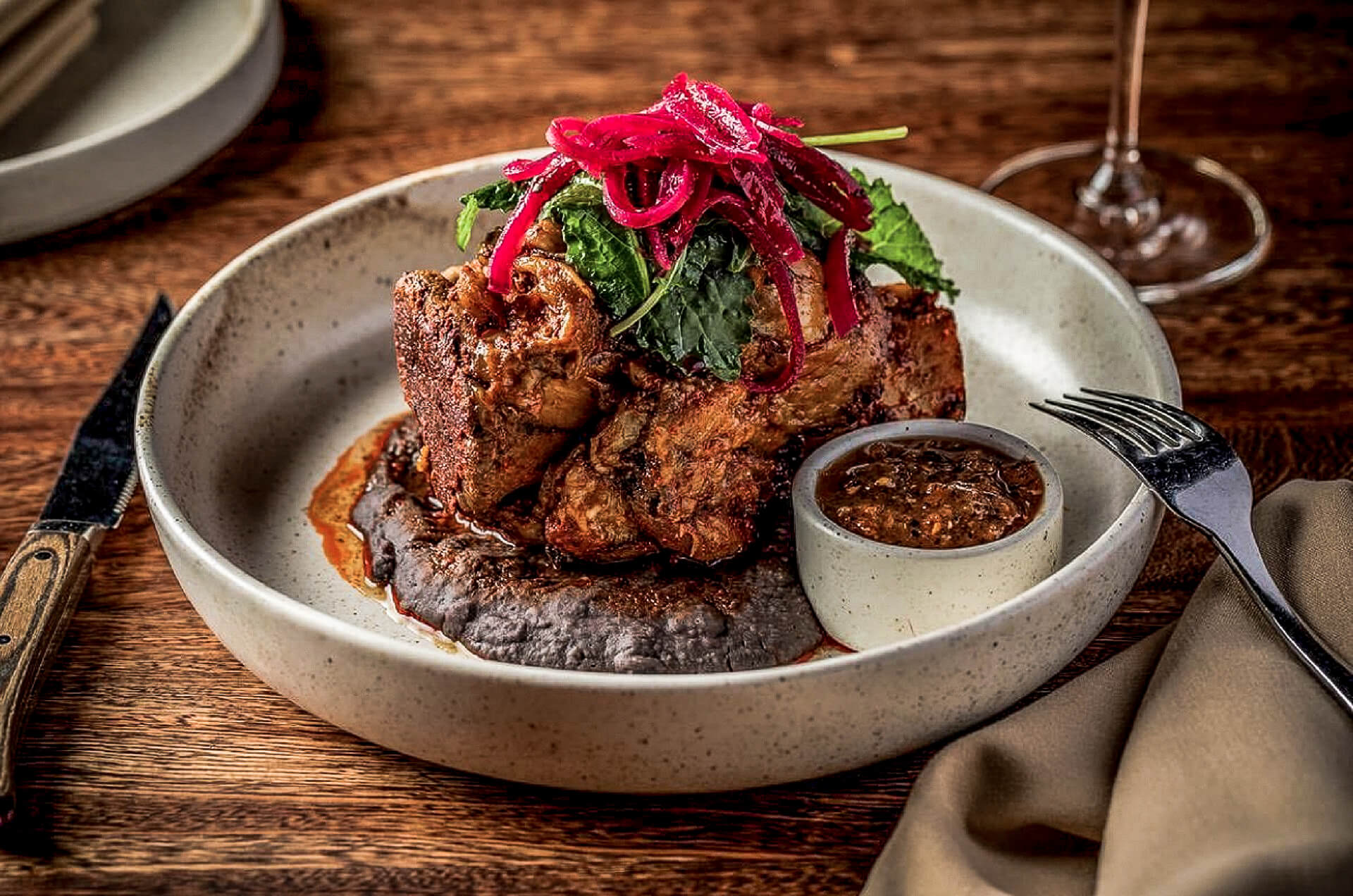
Image: Neil Burger Photography
Red Snapper is another hit at Tzuco. Gaytán rubs the fish with an aioli made of dried red pepper and nori algae. Then this fatty, iodine rich aromatic firecracker goes into the wood-fired oven. The result is an incredibly smoky flavor that blends beautifully with the juicy, lean meat of the Red Snapper. Gaytán serves this with Fideos Seco, which is a typical Mexican pasta topped with sour cream, avocado and Queso Blanco, the cheese dip popular in Mexico. “If you like, you can have this served with tortillas, and we put black beans and cheese on them. This gives the dish the extra kick of crispiness,” says Gaytán. And in doing so, he shows that his new take on Mexican cuisine is not an obsessive attempt to forgo classics like tortillas.
Differentiation as a basic ingredient
Carlos Gaytán’s vision of a deep-rooted, yet wide-ranging Mexican cuisine strikes a chord these days: His restaurant, Tzuco, transcends the culinary clichés that worked for decades but are now regarded with increasing skepticism, and instead presents a nuanced impression of Mexican cuisine. And it couldn’t be more authentic.
Sieh dir diesen Beitrag auf Instagram an
No wonder, then, that Gaytán still has a lot of plans. In 2024, the celebrity chef will open three restaurants at Disneyland in California – thereby becoming the culinary face of one of the world’s most famous theme parks. “I also want to open a restaurant on the California coast soon to make Mexican seafood more visible,” he says. As long as Carlos Gaytán continues to live his American dream, Mexican cuisine will be well on its way to finally being appreciated in all its glory – hopefully soon beyond the borders of America as well.
Brief profile of Carlos Gaytán
Born in 1970 in the small town of Huitzuco, Carlos Gaytán moved to Chicago at 20. He scraped by there working as a dishwasher without a visa. In his free time, he did unpaid internships in a large number of restaurants and learned the art of French cuisine. In 2008, he opened his first restaurant, Mexique. He was the first Mexican to receive a Michelin star for his Mexican-French cuisine at the restaurant. He closed the restaurant in 2017. One year later, he opened his new flagship, Tzuco, which is all about authentic Mexican cuisine. He also runs the Tales of Carlos Gaytán, a kind of Chef’s Table with twelve seats, which is only open for certain occasions. In addition, he owns the restaurant Ha on the Mayan Riviera in Mexico.


